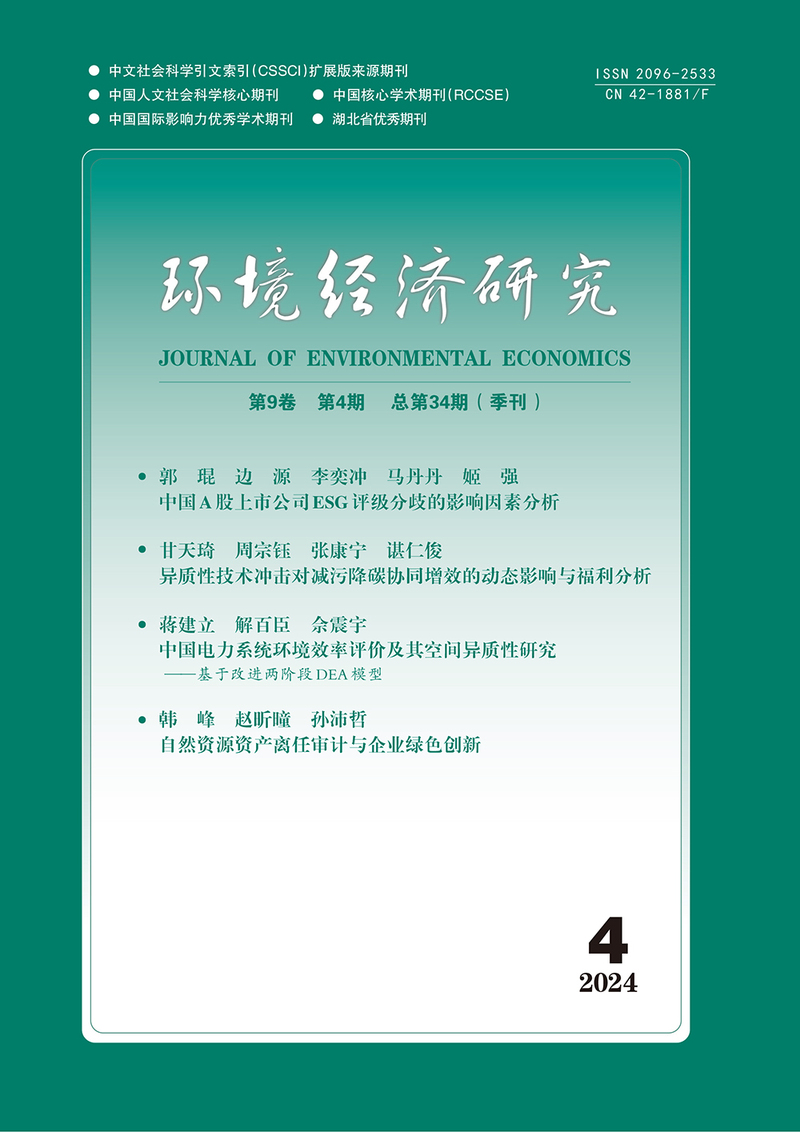Quan Yuchengand Li Zhiqing
摘要:排污收费政策作为我国实施最早、历时最长的经济激励型环保政策工具,提供了构建环境规制强度度量指标的可能性。本文聚焦于探讨中国环境规制影响的文献,认为规制强度的常用指标存在同时性、多维度性、测量误差等问题,并且相对缺少侧重政府行为的指标使用,而排污费用于度量环境规制强度时更侧重政府行为,因此本文利用排污费数据,使用计量模型构建出分省份和分行业的环境规制强度指标,用一致性检验、模型检验等方法评估其与另外三种广泛使用的规制强度指数的优劣,发现相对于现有指数而言,排污费指数缓解了同时性和多维度性问题,具有侧重政府行为的特征和覆盖多种环境政策工具的优点。本文的政策含义在于,地方政府应当考虑各种环境政策的交互关系,分地区分行业提高环境保护税税率。
关键词:环境规制强度指数;排污费;全要素生产率
Abstract:As the earliest and longest economic incentive environmental policy tool in China, the pollution charge policy provides the possibility of constructing environmental regulation stringency measurement index. This paper focuses on the literature about Chinese environmental regulation. Commonly used indicators of regulation stringency have some problems including simultaneity, multi-dimensionality, measurement error, some common problems relevant to index construction, and relative lack of focus on government behavior. Therefore in this paper, we explore the possibility of new index using dataset from pollution charge policy and new econometric model to construct points provinces and intensity of environmental regulation, with the widely used three kinds of regulation strength index, through the consistency test, model test and other methods to evaluate their advantages and disadvantages. We find that compared to the existing indices, thepollution charge index alleviates problems of simultaneity and multidimensionality, and has the advantages of focusing on government behavior and covering a variety of environmental policy tools. The policy implication is that local governments should consider the interaction among variety of environmental policies and raise the environmental protection tax rate conditional on different regions and industries.
Keywords:EnvironmentalRegulationStringency Indices; Pollution Charge; Total Factor Productivity
项目基金:国家能源集团科技创新2030—“煤炭清洁高效利用”重大项目先导项目:国家中长期碳减排路径与能源结构优化战略研究(GJNY2030XDXM-19-20.1)、上海市哲社课题“绿色金融在长三角更高质量一体化发展中的作用及机制研究”(019BJB017)、上海国际金融与经济研究院(应用高峰)课题“长三角一体化发展示范区制度创新”等课题。
全文:![]() 寻找合适的环境规制强度指标——基于中国排污收费政策的视角.pdf
寻找合适的环境规制强度指标——基于中国排污收费政策的视角.pdf
DOI:10.19511/j.cnki.jee.2020.01.004
